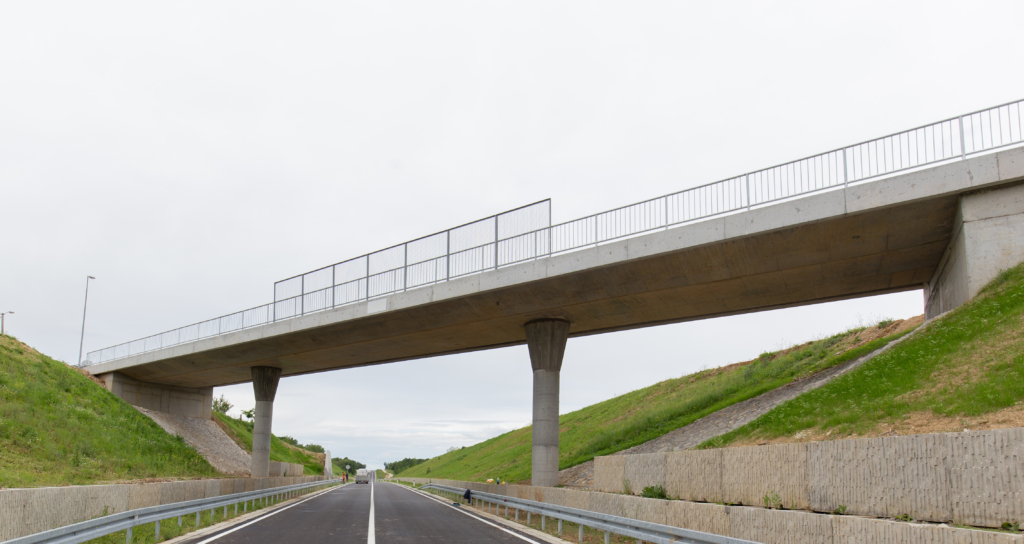Looming cuts to state transportation spending and a systemic funding shortfall are stoking concerns that central Maryland could face a deterioration in infrastructure, services and its economy.
In December, Maryland’s Department of Transportation (MDOT) released a proposed, six-year spending plan designed to contend with a $3.3 billion funding shortfall. In total, the plan would cut about $1 billion from MDOT’s operating budget, $2 billion from its capital budget and $400 million in funding to local governments.
The proposed FY2025 budget for Maryland’s Consolidated Transportation Program (CTP) would reduce funding to the Maryland Transit Administration (MTA) by eight percent or $98 million. That would trigger service cuts, including the elimination of the MTA commuter bus service, a 40 percent reduction in funds to Locally Operated Transit Systems (LOTS), and postponements or cancellations of multiple, planned upgrades to light rail, metro and buses. To address the capital budget reduction, the state plans to create a project prioritization system to reevaluate planned or proposed highway improvement projects.
“I am deeply concerned about what the impact of these cuts will be for residents,” Baltimore County Executive Johnny Olszewski said on WBAL Radio in December. Olszewski is also the 2024 President of the Maryland Association of Counties (MACo).
Long-delayed and badly needed highway projects will be further impeded by the cuts, including “major transportation projects, like the Dolfield interchange in Baltimore County,” Olszewski said. “Tens of millions of dollars will be wiped off the board with these cuts if they are executed.”
NAIOP Maryland and some of its members have lobbied in recent years to revive the Dolfield interchange project on I-795. Flagged as a transportation priority more than 25 years ago, the project suffered multiple setbacks and was ultimately defunded in 2019. Assessments at the time projected traffic failures along I-795 between Owings Mills Boulevard and Franklin Boulevard by 2022.
Mary Kane, President and CEO of the Maryland Chamber of Commerce, warns the funding cuts could have serious, negative impacts on the state’s transportation systems and its economy.
“The cuts are going to be significant,” Kane said. “From what MDOT has already released, they plan to cut Highway User Revenues to the tune of $13 million to the 23 counties for FY25 and a reduction of $32.9 million for Baltimore City in FY25. Let’s remember, according to the Maryland Association of Counties, local governments own and maintain roughly 83 percent of Maryland road miles and Highway User Revenues are the primary source of maintenance funding. We’re going to be looking at a lot of roads being poorly maintained or not maintained at all. That’s going to have real impact on Maryland’s ability to move people and goods.”
In addition, “critical infrastructure improvements, maintenance and expansion initiatives may face setbacks,” Kane said. “We might anticipate increased congestion, longer commute times, service disruptions for public transit systems, deteriorating road conditions – all of which will impact Maryland’s workforce and employers.”
“Communities across Greater Baltimore rely on transit to access jobs, education and opportunity,” said Nick Henninger-Ayoub, Director of Policy and Research with the Greater Baltimore Committee. “In a time when we need to be focused on growing our economy in transformative ways and retaining and growing our population, decreasing transportation options for our residents will lead to increased cost of living and put Baltimore further behind relative to competitor regions.”
“Industries heavily reliant on efficient transportation, such as manufacturing and logistics, may face operational challenges, potentially leading to job losses and reduced competitiveness,” Kane said. “The cuts to transportation funding will have far-reaching effects which will impact the commercial real estate industry as well.”
The transportation funding problem has been building for years, Olszewski said. “But we believe funding cuts that shortchange residents of Baltimore County – and across the entire Baltimore region – should not be the solution. We remain optimistic that we can continue working with the Moore administration and legislative leaders to ensure that Baltimore County and our region are more equitably supported in the final CTP submission to the General Assembly in January and in years ahead.”
In recent months, Olszewski has argued that Baltimore County is already disproportionately underfunded for Locally Operated Transit Systems (LOTS). In FY2024, the county received $416,408 – dramatically less than several other jurisdictions with comparable size and scope. Anne Arundel County received $881,465, Prince George’s County received $11,927,823 and Montgomery County received $41,713,353.
In addition to grappling with the FY25 transportation budget, state officials and advisors are also currently working to develop a long-term solution to the systemic funding shortfall. The Maryland Commission on Transportation Revenue and Infrastructure Needs has been tasked with developing recommendations to meet the needs of the Transportation Trust Fund (TFF).
Kane, who sits on the commission, said a variety of measures are currently being considered, including “ensuring electric vehicles contribute to the TFF just like gas-powered cars contribute through the gas tax, toll increases, utilizing public-private partnerships, and vehicle registration adjustments.”
The commission’s final report is due January 1, 2025.
